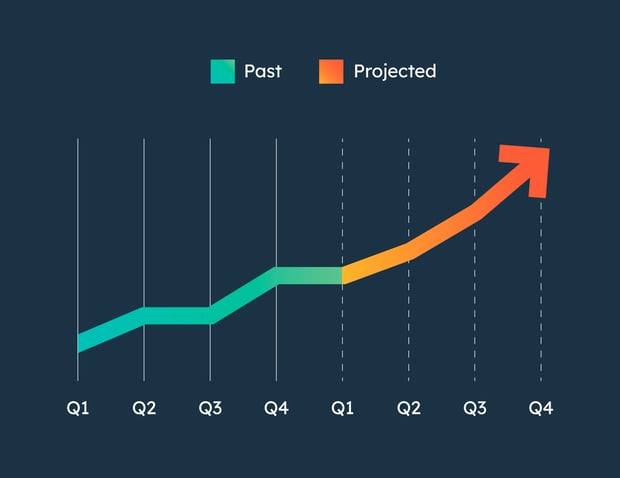Starting a new business can be rewarding and exhilarating. It can also be serious work.
Apart from other skills, entrepreneurs must also have immense knowledge of managing money. Some of the main reasons startups fail in America relate to capital — either the cash starts to run out, or they find themselves with no new sources of capital.
For the proper management of funds, it’s essential to be aware of how to save and make money, as well as find new sources of income.
In the U.S., this includes using tax credits—crucial bursts of money offered by the government that can help keep a startup going.
Many startups are looking to the incentives provided by tax credits to reduce tax burdens and improve cash flow. However, understanding tax laws can be a long and complicated process.
Here is a complete guide for the startup entrepreneur.
What are tax credits?
Tax credits are economic subsidies offered by the government to help businesses carry out any activity the state wants to promote. It allows startups and companies to reduce taxes by deducting some expenses from their income tax bill.
This is a highly lucrative proposition for businesses relying on capital-intensive manufacturing or building and purchasing new facilities or equipment.
Tax credits can be offered for several corporate activities—from creating new jobs for disadvantaged individuals to carrying out innovative research and development activities to creating employee retirement and leave plans.
These credits are offered by laws passed at both the federal and state level and are overseen by the IRS in the U.S. While some could be restricted to companies that work in a specific industry, hundreds of tax credits are available to startups today.
While tax credits must usually be requested within a specific period, some flexibility is available. Suppose a business exceeds the number of tax credits for a particular year but applied for none the previous year. In that case, they can use those credits retroactively on previously filed tax returns.
Similarly, if a company doesn’t plan to use all the available credits in a specific year, it could carry the balance to the next financial year.
Tax credits vs. tax deductions
 Even though these two terms are thrown about interchangeably, a tax credit is not the same as a tax deduction. Both reduce your company’s tax, but in very different ways.
Even though these two terms are thrown about interchangeably, a tax credit is not the same as a tax deduction. Both reduce your company’s tax, but in very different ways.
A tax deduction reduces the amount of income that will be subject to taxes by the government. In effect, a tax deduction lowers a company’s taxable income based on where it falls in the federal income tax bracket.
A tax credit, however, directly reduces the tax a company must pay by a pre-decided amount. Tax credits aren’t based on a percentage of income, which makes them more desirable than deductions in most cases.
Federal vs. state tax credits
Tax credits are offered at both the state and federal levels.
The government offers federal tax credits to encourage specific activities it wants to promote, such as research and development, investment in energy-efficient technologies, or employee benefits.
On the other hand, state tax credits are offered by individual states within the country to encourage similar corporate activities within the boundaries of a state.
While federal tax credits are usually more substantial than state credits, state credits can vary from case to case. But state tax credits could still be quite significant for a startup looking for any way to increase its capital.
Common tax credits every startup should know about
The federal R&D tax credit
Initially announced in the 1980s but made permanent in 2015, the R&D credit lets businesses deduct expenses of up to $250,000 per year from their payroll tax.
This credit applies to a wide range of startups — from technology to consumer goods — provided the business can prove that its work includes improving existing products, designing new software, or enhancing existing processes.
To apply for the R&D tax credit, a startup must have generated revenue for fewer than five years and have generated less than $5 million in annual revenue without seeing any profits. The IRS will also ask for documentation on all activities related to the cost claimed, involving payroll records for employees who are a part of the R&D process, any related supplies and equipment, blueprints, patents, prototypes, and designs that come out of the research process.
Once approved, it can save a startup a large amount of money. It is one of the most sought-after tax credits in the U.S.
The health care tax credit

Small businesses and startups can also access a healthcare tax credit that helps them afford health insurance for their employees.
Any startup with fewer than 25 full-time workers who pay at least 50% of the employees’ premiums and an average annual wage of less than $56,000 a year qualify for this program. The credit offered can be even higher for smaller companies with fewer employees on their payrolls,
For a startup to qualify, all employees must be enrolled in a Small Business Health Options Program (SHOP). This credit can help cover up to half of an employer’s contribution to premiums, providing a massive fillip to any startup’s balance sheets.
Retirement plan tax credit
The federal government also offers credits to startups that offer their employees a complete retirement plan. Companies with employee-wide retirement plans can expect to be compensated up to 50% of the costs it took to set up the plan, or a $5,000 annual limit, whichever is higher.
To be eligible, companies must have 100 or fewer employees, none of whom must be on a different retirement plan than the one the company offers.
The credit offered is expected to be spent on setting up and administering the plan and educating employees about its benefits. It can be claimed for three years.
The work opportunity tax credit
The work opportunity tax credit is offered to all employers who hire individuals from targeted groups that have faced significant barriers to employment.
This credit equals 40% or $6,000 of wages paid to individuals in their first year of employment and for those who have performed at least 400 hours of services for that employer.
To qualify, certain employees of a startup must belong to one of the following groups:
- Formerly incarcerated
- Recipients of State Assistance
- Residents of empowerment zones or rural renewal counties
- Veterans
- Individuals who have experienced long-term unemployment
The paid family and medical leave credit

Any startup that pays employees wages while on family or sick leave is eligible for this federal tax credit. This tax break aims to encourage small businesses to retain employees who need leave without dealing with the burden of paying for the time taken off.
To be eligible, startups must offer at least two weeks of paid family and medical leave, and the amount of pay provided must be at least half the wages usually paid to that employee. The credit a company can expect to receive typically equals 12%-25% of all paid family and medical leave to qualifying employees.
Applying for tax credits: A checklist
A startup must keep a number of things in mind when applying for tax credits under various schemes, such as the ones mentioned above.
- Understand the requirements: Every tax credit the government offers comes with specific eligibility criteria and requirements. To get a tax break without any additional hassle, a startup should properly research whether it meets all these criteria—number of employees, for instance, or amount of wages paid.
- Get the documents in order: Once you’ve understood the criteria, it’s essential to have documentation to prove that your startup meets all the requirements. In some cases, this could be as complex as producing blueprints of all new implemented technologies; in others, it could be as simple as maintaining payroll records. Applying for tax credits becomes much easier when all documentation is in order.
- Meet the deadlines: Most tax credits come with a specific deadline by which a startup must submit all necessary documentation. Missing a deadline could mean rejection by the IRS, so reviewing all application deadlines is essential.
- Keep up with changes: Tax laws are complex and subject to constant tweaks. To ensure your startup qualifies for a particular tax credit, you must stay current on all tax laws. Hiring a professional can go a long way in helping a business accurately apply for a tax credit and smoothen the entire process.
Optimize your startup journey
The government at both the federal and state levels offers hundreds of tax credits to boost the growth of startups. While we’ve mentioned just a few above, there are several more industry-specific breaks that a business can apply for. A few of these tax credits are specific to the U.S. and within certain states, but most others — the R&D credit being a prominent example — also apply across Canada, the EU, Asia, Mexico, and South America.
For additional tips on growing your startup and ensuring that your business thrives for years, apply to Hubspot for Startups. With a proven record of increasing leads, accelerating sales, and streamlining customer service, it’s one of the best investments any up-and-coming business looking to take the world by storm can make.





